Understanding STARS Project | Strengthening Teaching-Learning and Results for States | Complete Guide
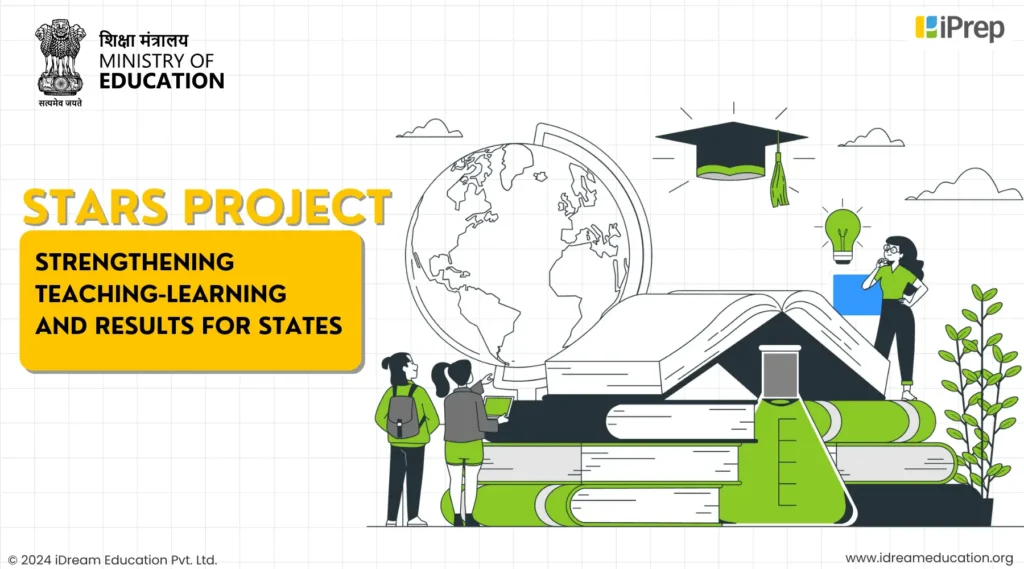
The STARS Project, an initiative combined by the Ministry of Education of India and the World Bank, stands as a beacon of Hope and an inspiring symbol of progress in our country India which is actively seeking educational excellence. STARS (Strengthening Teaching-Learning and Results for States) has initiated an endeavor that surpasses national boundaries and affects individuals’ lives, with the audacious objective of rectifying inequalities and elevating educational benchmarks. This program has been active for the last three years now. It seeks to transform the educational environment in six states of India. The course of action for the same involves utilizing a substantial budget allocation and a comprehensive implementation framework.
As we delve into the intricacies of STARS, exploring its objectives, challenges, and achievements, we’ll uncover a narrative of resilience, innovation, and the unwavering pursuit of quality education for all. Let us start by understanding the STARS Project in detail by uncovering some facts around the same.
About STARS Project
As an initiative to enhance the standard of education in India, STARS (Strengthening Teaching-Learning and Results for States) is a practical project. Initiated in 2020 in partnership between the World Bank and the Ministry of Education (MoE), this initiative seeks to eliminate disparities in access to high-quality education and improve educational outcomes.
Some Facts About The STARS Project
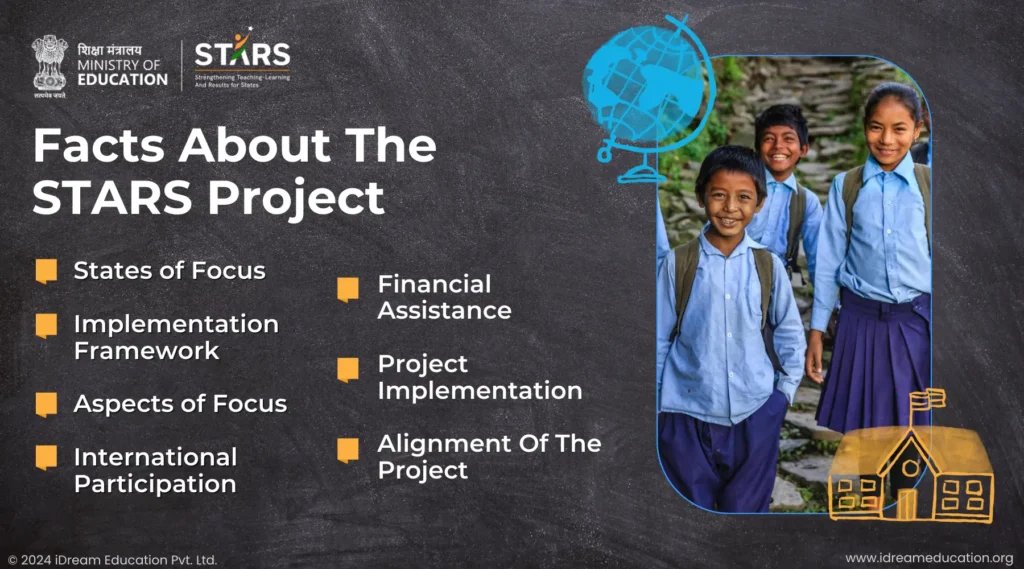
- Financial Assistance: The STARS Project got a budget allocation of $500 million from the World Bank, which contributed to the overall cost of Rs. 5,718 crores for the project.
- Project Implementation: The STARS project is executed through the Department of School Education and Literacy (DoSEL) under the Ministry of Education (MoE)’s supervision.
- Alignment Of The Project: The STARS Project completely aligns with the objectives of the National Education Policy (NEP) 2020.
- States of Focus: The project is implemented in 6 states of India. These include Himachal Pradesh, Rajasthan, Maharashtra, Madhya Pradesh, Kerala, and Odisha.
- Implementation Framework: Utilizes the established Samagra Shiksha Scheme as the foundation for project execution within the implementation framework.
- Aspects of Focus: This includes initiatives such as the National Curricular Framework for Early Childhood Care and Education, PM e-Vidya, and Foundational Literacy and Numeracy Mission (NIPUN Bharat), which are all components of the Atmanirbhar Bharat Abhiyan.
- International Participation: The STARS project will facilitate India’s involvement in the Programme for International Student Assessment (PISA) survey.
Now let us understand the key objectives of the STARS Project one by one.
Key Objectives Of The STARS Project
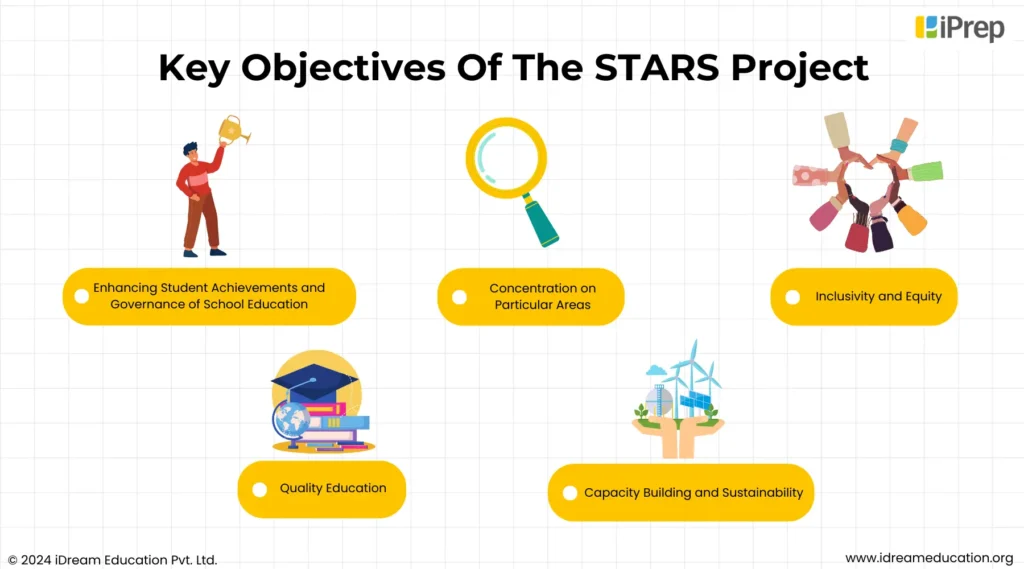
The STARS Project, an acronym for Strengthening Teaching-Learning and Results for States has been designated by the Government of India with two primary objectives:
1. Enhancing Student Achievements and Governance of School Education
Enhancing student learning: The primary objective of the STARS project is to optimize the learning aspect of students by enhancing academic performance and learning outcomes across an age range of 3 to 18 years, including preschool through Class XII. This involved an enhanced emphasis on the following areas:
- Focus on foundational skills
- Improved learning environments
- Holistic development
- Personalized learning
- Improved learning outcomes
- Transitions from School to Work or Higher Education
Enhance school governance: Another primary objective of STARS is to bolster the governance of education in the designated states as a whole. This important step brought an emphasis on the following:
- Building Effective leadership
- Improved teacher quality
- Accountability and transparency
- Resource optimization
- Community engagement
2. Concentration on Particular Areas
The Stars Project utilizes two primary components to resolve a variety of educational concerns:
a) National Component
Through this, the objective of the STARS project is to assist the Ministry of Education (MoE) in the development of comprehensive national data systems that enable efficient monitoring of student retention, transition, and completion rates. Overall it revolves around the idea of ensuring that the student retention rates go up and drop-out rates go down significantly.
b) State Component
Here the main objective is to help the education board of the selected states in enhancing the teaching and learning experiences in their board schools. Altogether, Six states are eligible to receive State Incentive Grants and those involve Kerala, Himachal Pradesh, Maharashtra, Odisha, and Rajasthan.
These grants prioritize the following five essential subcomponents:
- Enhancing Early Years Education: This entails establishing standardized teaching materials, creating curricula that are suitable for different age groups, and involving parents in discussions regarding the significance of early childhood education.
- Enhancing Foundational Learning: The STARS Project significantly emphasizes the improvement of fundamental literacy and numeracy abilities across all students.
- Eradicating Learning Gaps: Another primary objective of STARS is to mitigate learning disparities or gaps by identifying and addressing them to promote equitable access to educational opportunities.
- Improving School Administration and Leadership: Another focused objective of the STARS Project is to enhance school administrative procedures and leadership abilities.
- Ensuring Ongoing Professional Development: To augment the efficacy of teachers’ instruction, STARS provides support for programs that foster continuous professional development of the teachers.
3. Inclusivity and Equity
The STARS Project, the full form of which is “Strengthening Teaching-Learning and Results for States” also focuses on providing an inclusive and equitable education to the students of the selected states. Here’s how:
- Promoting Inclusive Education: STARS endeavors to guarantee all children, irrespective of their origin, ethnicity, or abilities, access to high-quality education. This further entails offering assistance to children who are disabled or belong to marginalized communities.
- Bridging The Gender Gap In Education: The STARS Project endeavors to mitigate the gender difference in education by promoting the enrollment and active involvement of young girls in academic pursuits.
4. Quality Education
Another key and underlying objective of the STARS Project an acronym for Strengthening Teaching-Learning and Results for States is delivering Quality Education. The steps taken for that involve:
- Implementing the National Education Policy (NEP) 2020: The STARS Project completely aligns with the National Education Policy’s Vision as it promotes comprehensive learning, and emphasizes the development of critical thinking and problem-solving abilities. Further, it harnesses the potential of technology in the field of education.
- Enhancing Assessment Systems: The objective of this project is to optimize assessment methods to ascertain precise student learning outcomes and pinpoint specific areas that require enhancement.
- Developing New & Innovative Teaching-Learning Practices: STARS advocates for the implementation of inventive pedagogical methods that accommodate a wide range of learning styles and foster active participation in the educational journey.
5. Capacity Building and Sustainability
Another one of the major focus areas of the STARS project is building the capacity of these states to provide quality education while keeping sustainability at the center. The steps involved in this involved:
- Strengthening institutional capacity: The objective of the STARS Project is to bolster the capabilities of educational institutions and schools to effectively and sustainably provide high-quality education.
- Encouraging Community Engagement: The STARS Project promotes community engagement by fostering collaboration among educational institutions, parents, and community stakeholders to establish a conducive learning environment.
- Constructing resilient monitoring and evaluation systems: The undertaking places significant emphasis on the establishment of efficacious monitoring and evaluation mechanisms to trace progress, detect obstacles, and guarantee responsibility.
Challenges Faced By The STARS Project
Irrespective of the positive, specific, and well-defined objectives of the STARS Project, it has confronted several obstacles that must be resolved to ensure its ongoing prosperity and enduring influence. The following is an analysis of these obstacles:
1. Issues With The Teacher Workforce
During the implementation of the STARS Project, the issues with the Teacher Workforce have come up as significant challenges for the project. These involve:
- Teacher Vacancies: The task of occupying unfilled teaching positions continues to present a substantial obstacle for the STARS Project. Ensuring punctual appointments and recruiting qualified, motivated teachers are critical factors in ensuring the effective execution of project initiatives.
- Professional Development: The professional development of teachers for them to be able to adapt to the new pedagogical approaches and technologies has been a significant challenge for the STARS Project. It is essential to empower teachers with the skills required to utilize new pedagogical approaches and technologies through ongoing training. Additionally, it is crucial to strike a balance between the rate at which technology is integrated into education and ensure that teachers are adequately prepared to navigate its intricacies through careful planning.
2. Concerns Regarding Funding and Decentralization
- Restricted Decentralization: The STARS project has faced criticism for its perceived inadequacy in fostering decentralization through its circumvention of local authorities in the process of allocating funds. This gives rise to apprehensions regarding accountability and ownership at the state and district levels.
- Appropriate Fund Utilization: A completely efficient and appropriate Fund Utilization has also been a challenge for the STARS Project. Ensuring the appropriate and efficient utilization of allocated funds across different levels, with a particular emphasis on educational institutions, is vital for attaining the intended results of resource allocation.
3. Implementation Difficulties
- Complexities of Logistics: Due to logistical complexities, it has been difficult to oversee the implementation of the STARS project in multiple states with distinct contexts and requirements. This necessitated adaptability and flexibility to accommodate various learning environments.
- Sustainability Considerations: It is imperative for the project to devise strategies to guarantee the enduring viability of its endeavors and accomplishments beyond the present financial cycle. This necessitates comprehensive capacity building and meticulous planning within the targeted states.
4. Resolving Current Inequalities
Uneven Access and Results: One of the project’s continuous challenges was tackling the social and economic disparities that still exist and can impede certain groups’ access to and performance in school. To guarantee fair education for everyone, these disparities necessitated focused initiatives and tactics.
All these challenges made it quite difficult for the STARS Project to achieve the underlying objectives and goals. However, it had strong principles and contingency planning in place which helped the project to create a significant impact and unlock countless achievements. Let’s now talk about these achievements and the impact they created.
Impact And Achievements Of The STARS Project
While overcoming the challenges faced, states that were the focus of the STARS Project have witnessed substantial advancements in governance and educational outcomes. The following is a synopsis of its accomplishments:
1. Enhancement of Student Learning
- Enhanced language proficiency: As a result of the STARS Project, an increasing proportion of students are attaining grade-level language proficiency, which signifies the development of more robust foundational abilities.
- Reduction in Learning Gaps: STARS has contributed to the reduction of learning disparities between diverse student groups, thereby advancing educational equity.
- Enhanced Completion Rates: Since the launch of the STARS Project, there have been discernible upward trends in secondary school completion rates in the selected states, indicative of heightened student retention and graduation rates.
2. Improvements to School Governance
- Enhanced governance index scores: The initiative has made a substantial contribution to the overall enhancement of the efficiency and effectiveness of school governance at the state level. Thus showing improvements in the governance index scores.
- Advanced Assessment Systems: STARS has contributed to the advancement of learning assessment systems that are more rigorous and standardized to more accurately measure learning outcomes.
- Enhanced Planning: Project initiatives have yielded enhanced capabilities for decentralized planning and administration in educational institutions, which have subsequently contributed to more effective allocation of resources and decision-making processes. All that led to a significant improvement in the state-level delivery system.
3. Promoting Learning and Collaboration
- Knowledge Sharing: The STARS Project has facilitated collaborations among targeted states to exchange knowledge and share best practices, resulting in reciprocal learning and progress. This has significantly promoted cross-state learning.
- Community engagement: The initiative has promoted increased parental and stakeholder participation in school activities, thereby cultivating a cooperative atmosphere conducive to the achievement of students.
It is important to mention that the STARS project is presently in progress (as of February 2024), with an intended duration of execution extending to 2025. Consequently, additional information and analysis will be required to comprehensively evaluate the sustainability and long-term effects of the project’s accomplishments.
Nevertheless, preliminary findings and developments indicate that the STARS Project is effectively enhancing governance and educational quality in the states that are its focus. The project’s emphasis on comprehensive student development, enhancing capabilities, and fostering collaborative learning offers the potential for an enduring enhancement in the educational domain for forthcoming cohorts.
Let us now discuss how the use of iDream Education’s digital learning solutions can implement the STARS Project even more easily.
How iDream Education’s K–12 Digital Learning Solutions Can Help with an Efficient Implementation of the STARS Project
With its emphasis on enhancing student learning outcomes and fortifying school governance, the STARS Project offers educational technology solutions a vital chance to make a big difference. By addressing several crucial areas, iDream Education’s extensive suite of digital learning solutions for K–12 education can help ensure the project is implemented successfully. Let’s see how:
1. Improving Education for Young Children
In keeping with the project’s focus on early childhood development, the iPrep learning platform, which is filled with content that is appropriate for young learners, can introduce them to basic concepts like alphabets, numbers, shapes, and colors entertainingly and engagingly. The platform brings in a complete package for facilitating Foundational Literacy and Numeracy in kids with its engaging SET of FLN content. Together with that, the application also has activity videos that can help these young learners make fun toys and working models using easily available material around them.
That’s not it, the application further has a beyond academics section which introduces these young mids to various important and holistic growth-oriented subjects such as yoga, sports, digital literacy, financial literacy, environment, performing arts, etc… That way, with iPrep, young learners can get complete exposure to what they need for their academic as well as holistic growth.
2. Minimizing Knowledge Gaps
Learning gaps are discrepancies or inadequacies in the knowledge or abilities of a learner, which frequently arise from incomplete comprehension or overlooked concepts throughout their academic trajectory. These deficiencies may hinder subsequent education and impede academic advancement. By customizing instructional materials and tempo to suit the unique requirements of each user, the personalized adaptive learning application by iDream Education called the iPrep PAL App can efficiently bridge these learning gaps.
By employing algorithms to assess user performance and pinpoint areas of deficiency, iPrep PAL becomes capable of delivering precise remediation and instruction. Using adaptive exercises, prompt feedback, and personalized learning paths, individuals can review and attain grade-level proficiency even in the most difficult subjects, thereby bridging learning gaps and fostering a more holistic comprehension of the subject.
In essence, the iPrep PAL-personalised adaptive learning application enables students to advance at an individualized and efficient rate, guaranteeing a more customized and impactful educational encounter that removes the learning gaps.
3. Improving Management and Leadership in Schools
Every K-12 Learning content solution offered by iDream Education offers insightful data and analytics on the use of the solutions. Each of our solutions including the iPrep Digital class (Smart Class), iPrep Digital LAB (Smart ICT Labs), iPrep Tablets (Personal learning tablets), iPrep PAL (Personalized adaptive learning app), and iPrep App (One Stop Learning App For K-12), come with a real-time progress tracking system that at every point records the usage points on made on the platform.
This can be helpful for the STARS Project as this capability empowers teachers and administrators to oversee student progress and engagement efficiently, pinpoint areas that require enhancement, and customize instruction to suit the unique requirements of each student.
Moreover, the utilization of iDream Education’s solutions can furnish decision-making processes with data and analytics that enable resource allocations and interventions to be grounded in empirical evidence, thereby benefiting both administrative and classroom operations. By utilizing these resources, the STARS Project can foster a culture of accountability and ongoing improvement in schools, thereby improving management and leadership, which will ultimately result in better outcomes for students.
4. Encouraging Ongoing Professional Growth
With each digital learning solution, iDream Education delivers comprehensive training for the teachers, students, and school administration on how to best use the solution provided. Together with that, it provides a 24*7 support system to help the users with whatever issue they face. It also helps teachers in making lesson plans that can make the best use of the solutions provided to them.
This will enable the STARS Project to utilize the resources of iDream Education to promote teachers’ continuous professional development. Further, by Receiving individualized training sessions, ongoing support, and guidance on integrating the curriculum, teachers have the opportunity to improve their pedagogical abilities and maximize the benefits of the digital learning solutions offered. Furthermore, the provision of a round-the-clock support system guarantees that instructors can expeditiously resolve any obstacles they face, thereby cultivating an environment that promotes ongoing development and progress.
In addition, the assistance provided by iDream Education in lesson planning facilitates the seamless integration of technology into teaching methodologies, thereby optimizing the effects of digital learning solutions on student achievements. Further, through the provision of essential knowledge and resources to teachers, the STARS Project has the potential to foster continuous professional development within the education ecosystem. Altogether, this can result in enhanced pedagogical approaches and more favorable academic achievements for all participants.
Let’s Conclude
In summary, the STARS Project serves as an exemplary model of advancement and optimism in India’s ongoing quest for academic distinction. This serves as evidence of the effective cooperation between the World Bank and the Ministry of Education, with the shared objective of addressing inequalities and enhancing educational benchmarks. Notwithstanding the difficulties it faces, STARS maintains a steadfast and inventive stance, propelling itself towards all-encompassing student growth and enhanced educational governance.
STARS addresses critical facets of educational reform using its strategic objectives, which center on student achievement, governance enhancement, inclusivity, and quality education. Further, the ramifications of its influence are evident in improvements to student learning, governance effectiveness, and community involvement, which augur a bright future for education in the states that are being targeted.
The incorporation of iDream Education’s digital learning solutions has the power to enhance the execution of STARS by promoting continuous professional development among educators, bridging gaps in knowledge, facilitating personalized learning, and a lot more. These initiatives, when combined, can establish a foundation for lasting advancement and fair availability of high-quality education.
As STARS progresses, it sheds light on avenues for forthcoming cohorts, fostering a heritage of distinction and potential. Further, as additional milestones are accomplished, STARS reasserts its dedication to influencing a more promising future for all, in strict adherence to the guiding principles of educational excellence, equity, and sustainability.

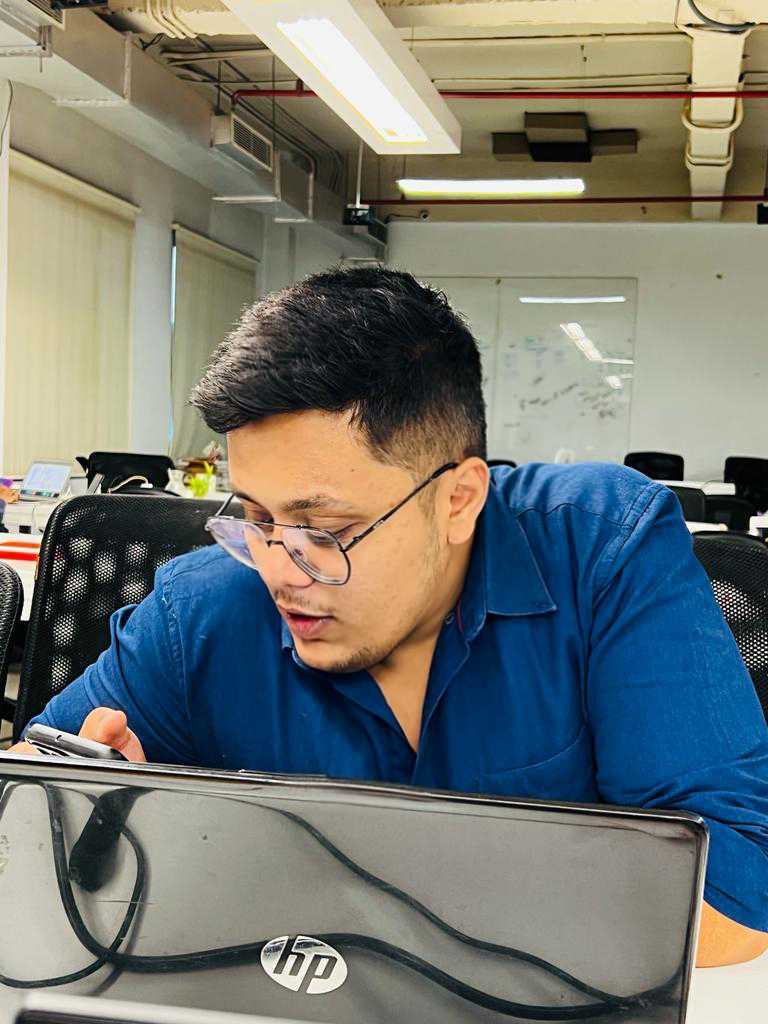
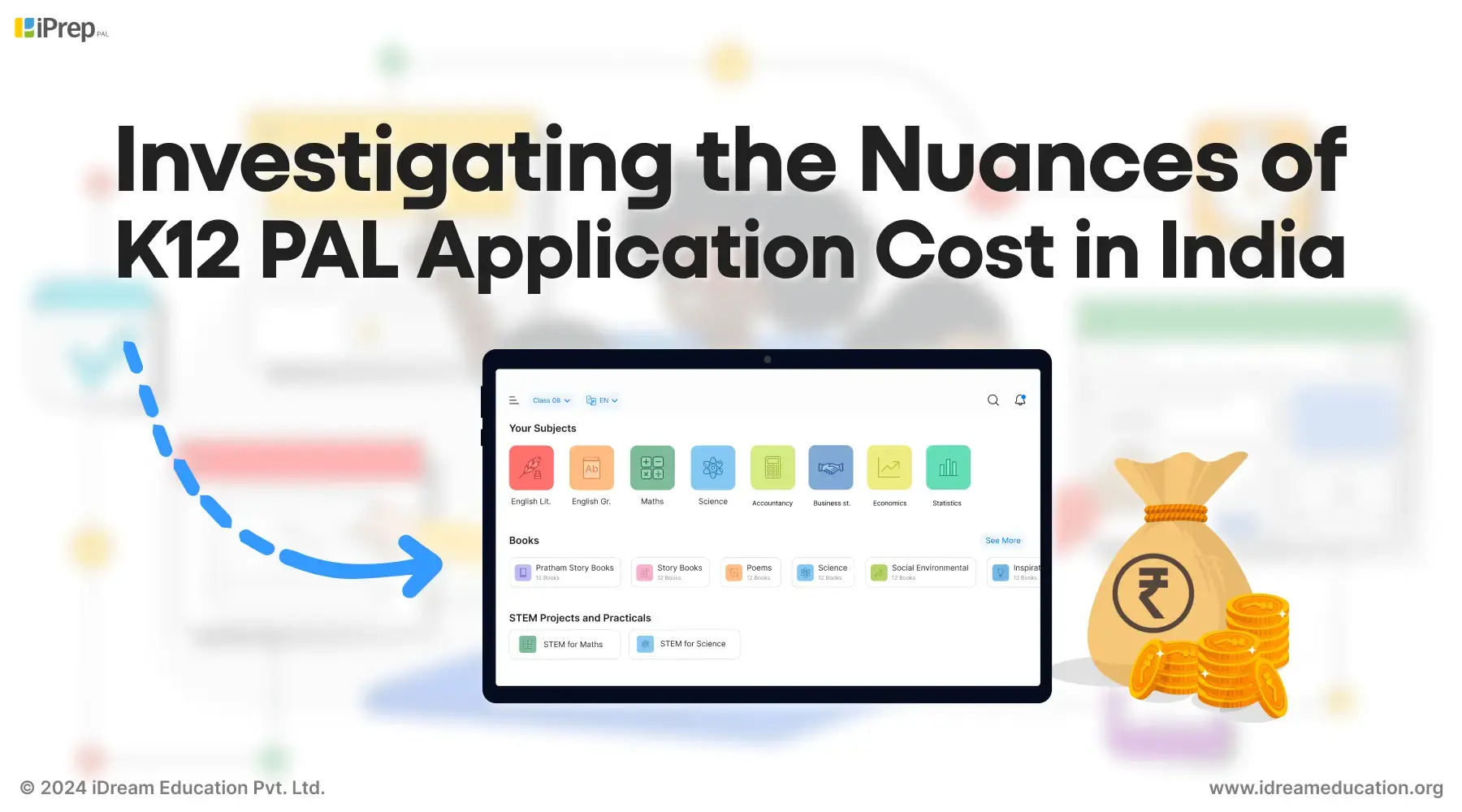
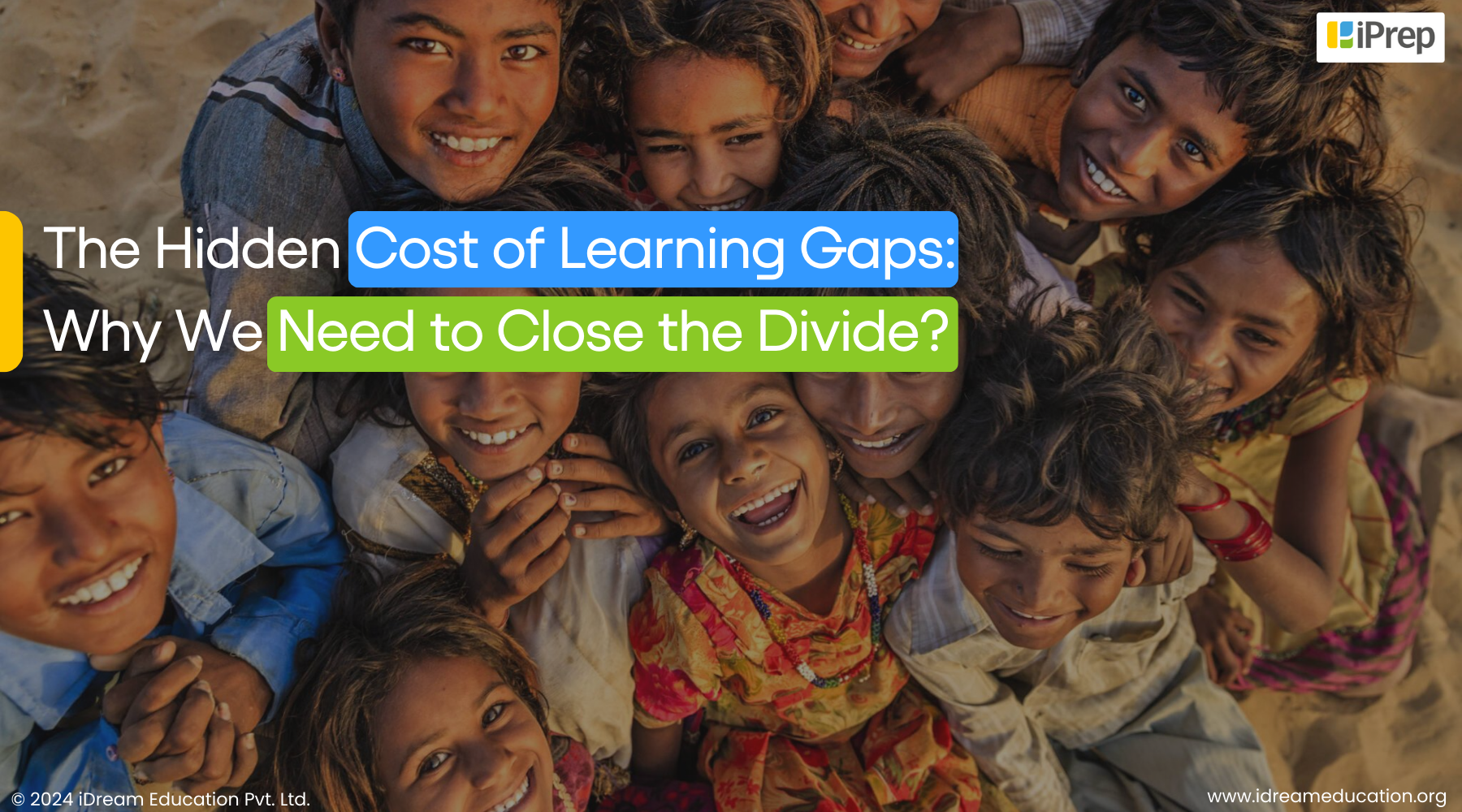
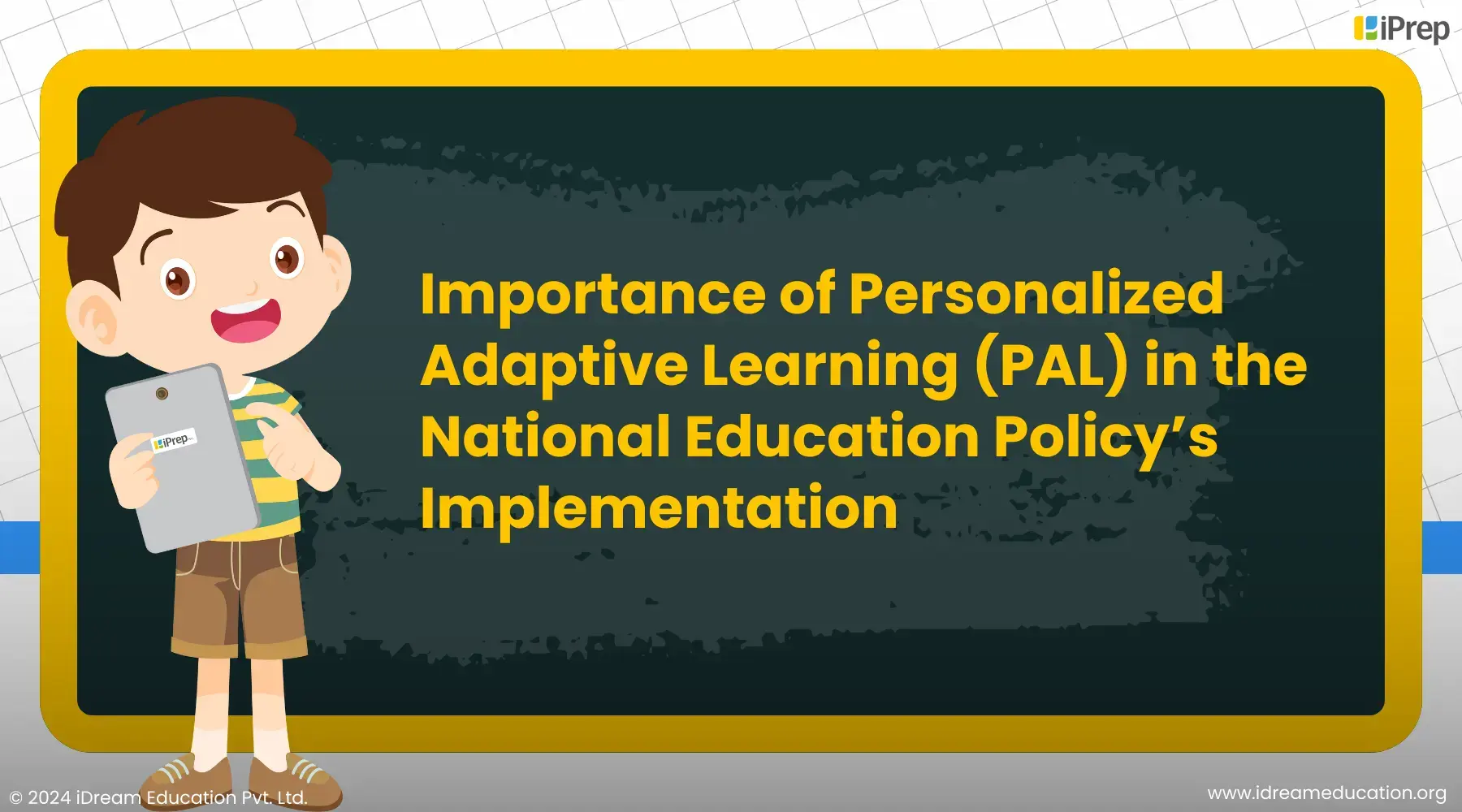
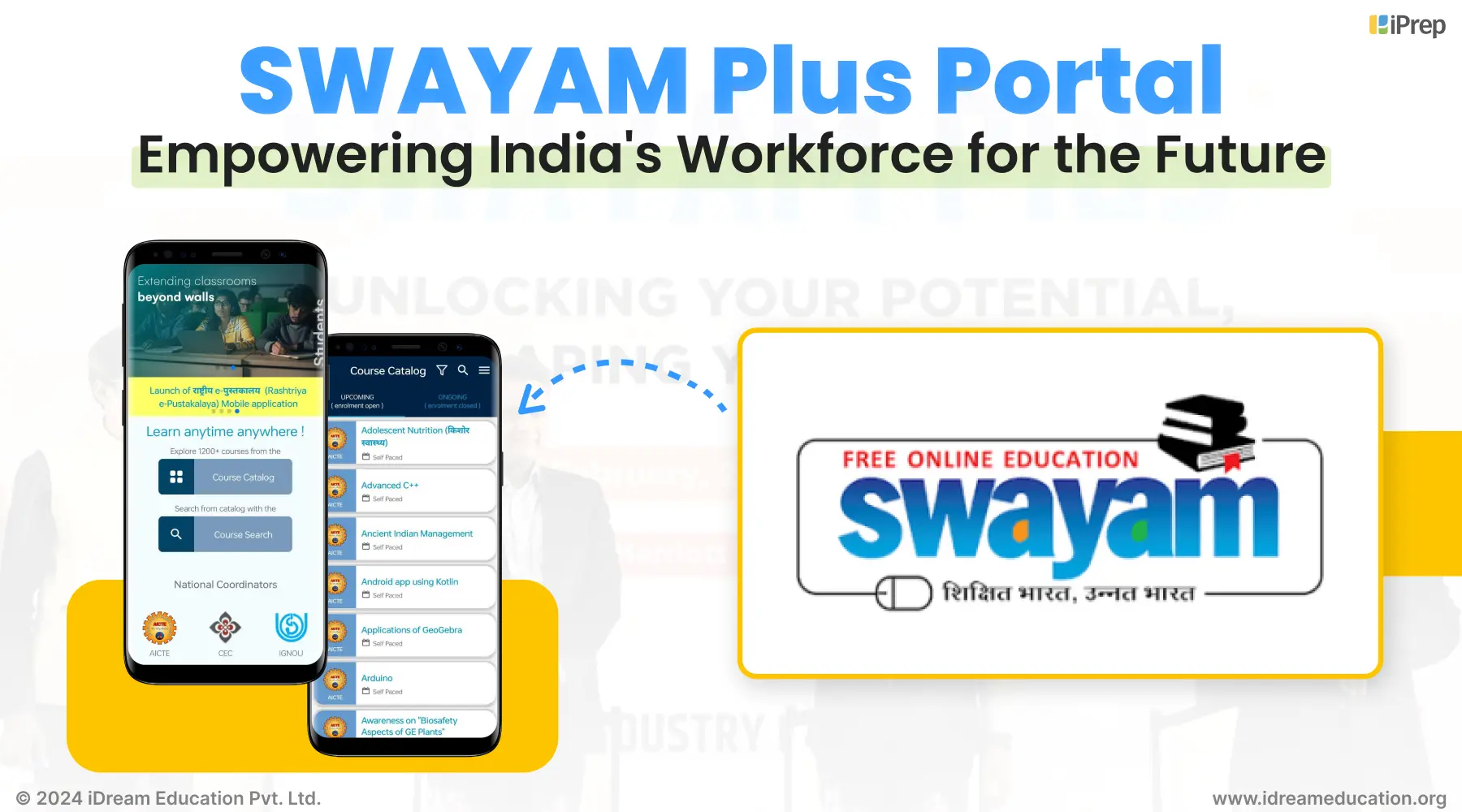
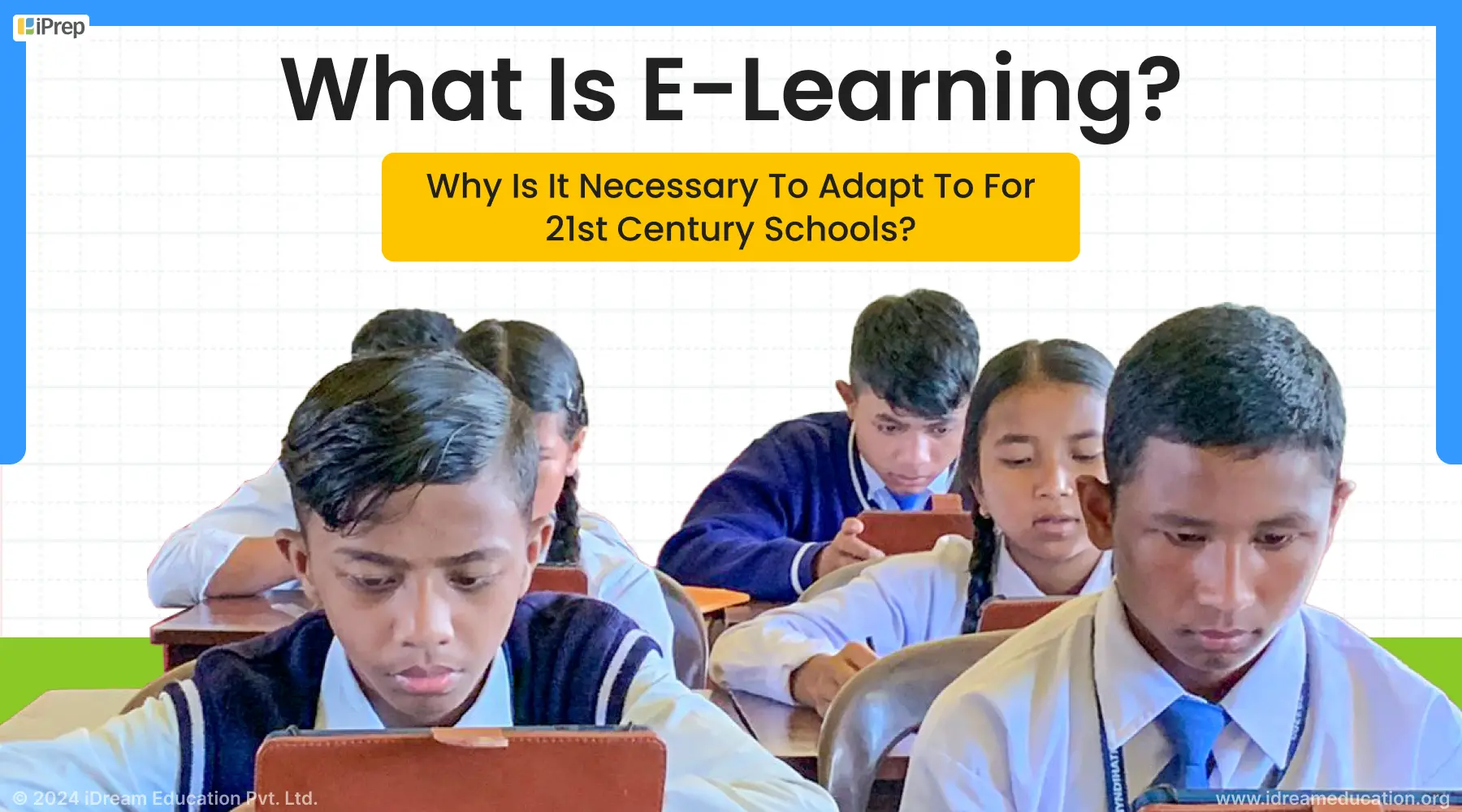
Lovely Blog Macha